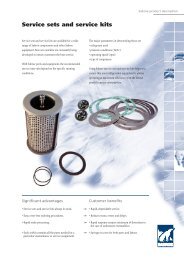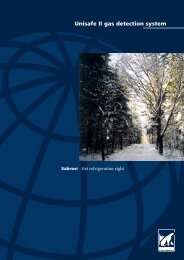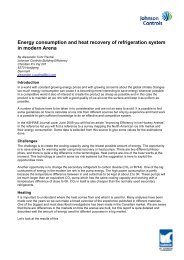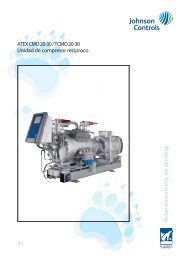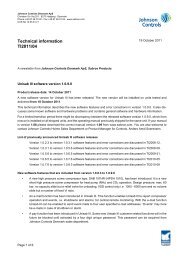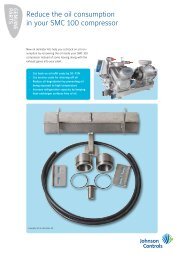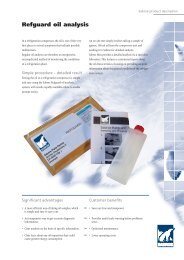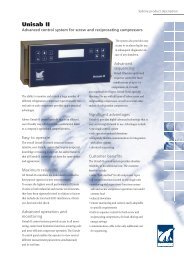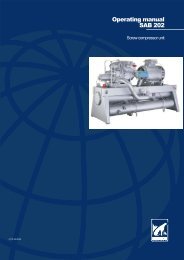here - Sabroe
here - Sabroe
here - Sabroe
- No tags were found...
You also want an ePaper? Increase the reach of your titles
YUMPU automatically turns print PDFs into web optimized ePapers that Google loves.
possible obtain temperatures down to -80°C using the Joule-Thomson effect but theefficiency was not very good and the working pressures were up to 3000 bars. The highpressures caused some fatal accidents over the years the technology was used.From the middle of the 1850’s and forward the dominating technology has beencompression technology using phase changing refrigerants such as ammonia, sulphurdioxide and carbon dioxide. In the beginning of the 1920’s other natural refrigerants suchas iso-buthane, propane and ethane turned up. Most of these refrigerants disappearedrapidly after the introduction of the synthetic refrigerants sold under the trade name“Freon”. The only classical refrigerant that remained in the market was ammonia. It wasmainly used in land based industrial refrigeration systems.CO 2 disappeared from the market in the middle of the 1950’s, w<strong>here</strong> <strong>Sabroe</strong> installed thelast CO 2 system onboard a fishing vessel. The last active CO 2 systems disappeared in the1980’s. However Professor Gustav Lorentzen from Norway and others started promotingthe use of CO 2 and other natural refrigerants in the beginning of the 1990’s as a completeanswer to the environmental problems encountered with the man made green house gasessuch as the HFC’sThe Freon type refrigerants had the problem that they contained chlorine whichparticipates in the destruction of the ozone layer. Hectic diplomatic activities in the1980’s resulted the signature of the Montreal Protocol in 1987. The solution was to phaseout the CFC gases that had the strongest impact on the ozone layer. The HCFC that had alow impact on the ozone layer were then promoted as part of the solution. The phase outof the CFC gases went very quick and was relatively uncomplicated. Under a partmeeting in Copenhagen the situation changed and the HCFC’s became a part of the ozoneproblem. The phase out time for the HCFC’s was relative long because one of the mainand most popular refrigerants ever, R22, was so widely used. The last R22 refrigerationplants installed legally in Europe were installed between 2000 and 2002 depending on thesize. From the end of 2009 it is no longer legal to use virgin R22 and from the end of2014 it is also no longer to use recycled R22 to top up with in existing plants.New trendsFigure 2: Some global players are sharing knowledge aboutthe use of natural refrigerants and others do it on their own



